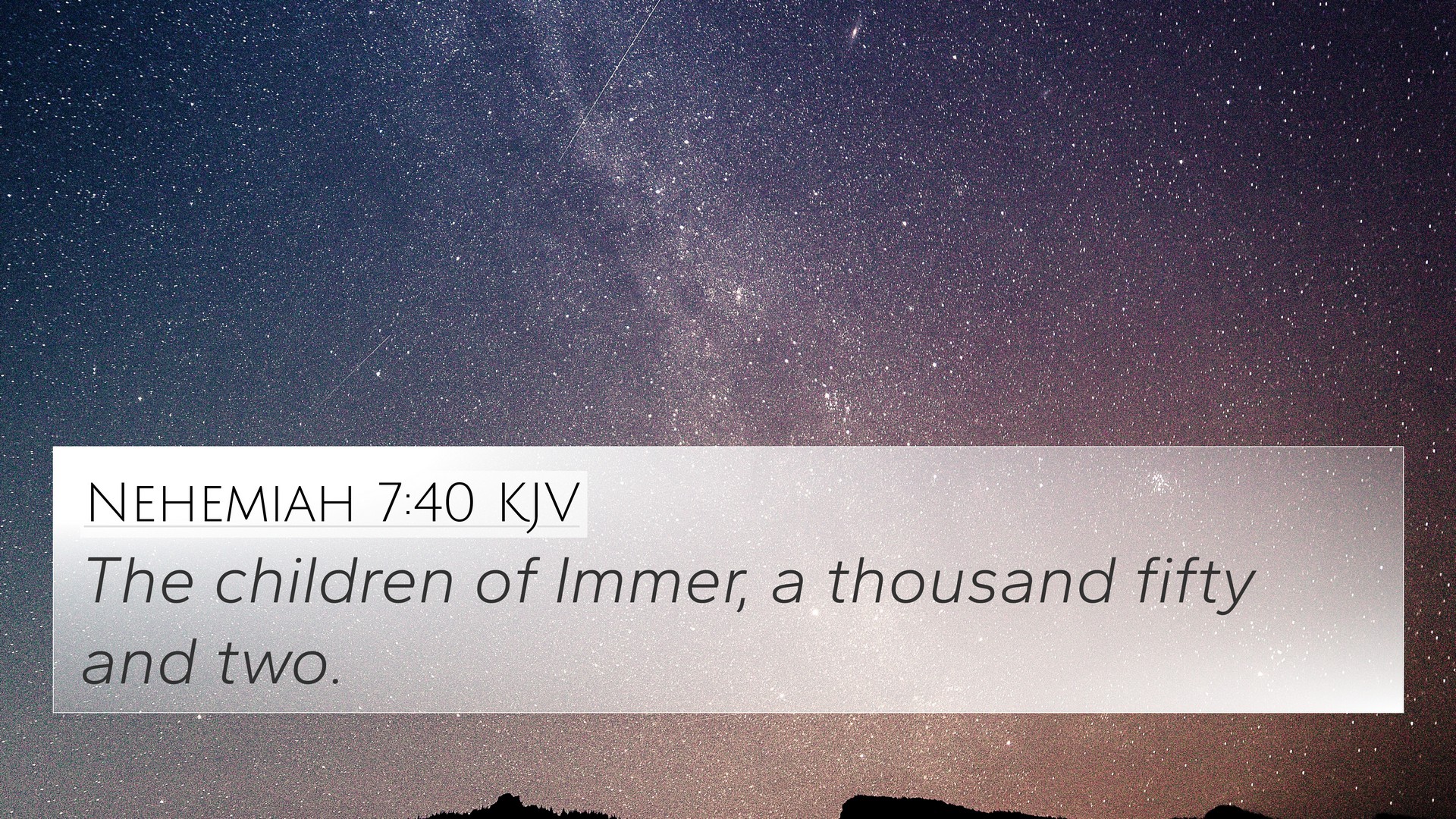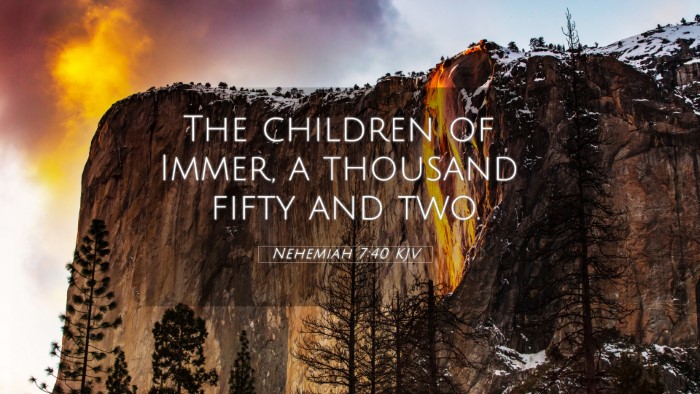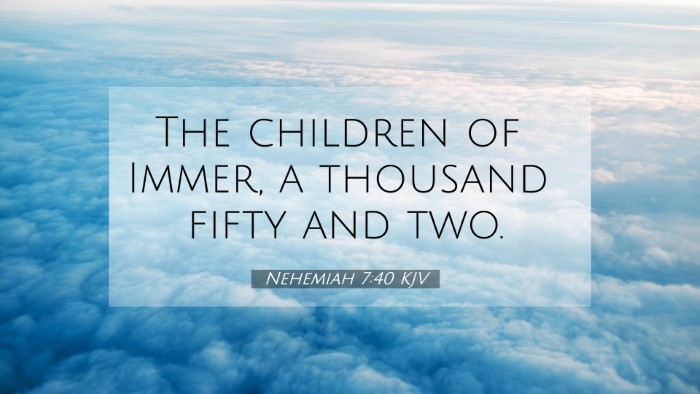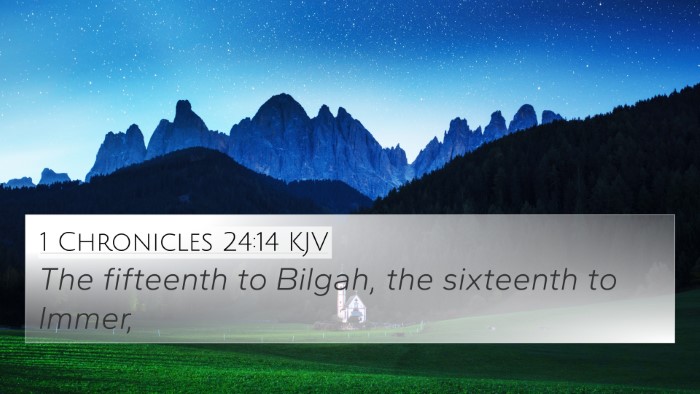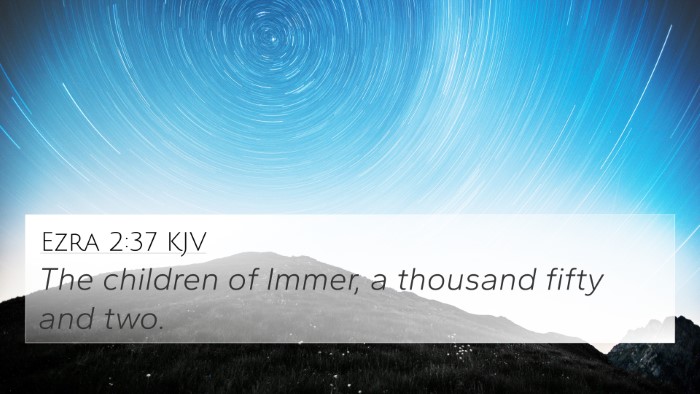Understanding Nehemiah 7:40
Verse Context: Nehemiah 7:40 reads: "The priests: the children of Jedaiah, of the house of Jeshua, nine hundred seventy and three." This verse is part of a census conducted by Nehemiah to establish the restored community in Jerusalem after the Babylonian exile.
Summary of Commentary Insights
The verse reflects the importance of priestly lineage and service, emphasizing the role of priests in the spiritual life of Israel. The genealogical records serve not only to re-establish identity but also to ensure proper worship and the fulfillment of divine law.
Key Themes
- Restoration of Worship: The re-establishment of the priesthood signifies a return to proper worship practices in the newly rebuilt Jerusalem.
- Significance of Lineage: The numbering of priests underscores the importance of genealogical records in maintaining the sanctity of priestly service.
- Community Identity: The census fosters a sense of community among the returned exiles, crucial for their national and religious identity.
Connections Between Bible Verses
This verse can be cross-referenced with other biblical texts that discuss the priesthood and community identity, highlighting its significance through scriptural parallels:
- Ezra 2:36-39: A parallel list of priests returning from exile, establishing the continuity of priestly service.
- 1 Chronicles 24:1-3: Discusses the divisions of the priests, providing context for the order of priestly service.
- Hebrews 7:11: A New Testament reference addressing the need for a better priesthood, which connects to the importance of the Levitical priests.
- Jeremiah 33:17-18: Prophecies about the enduring nature of the priesthood that connects to the restoration in Nehemiah.
- Exodus 28:1: God's command regarding the appointment of priests, which underscores their critical role in worship.
- Leviticus 10:10: The importance of distinguishing between holy and common, a role that the priests are set to uphold.
- Thematic Analysis with Malachi 2:7: Where the priests are said to guard knowledge, echoing the responsibilities outlined in Nehemiah.
- Matthew 2:4-6: Pointing to the significance of Jerusalem's religious heritage, as revealed by the priests.
- Luke 1:5-9: Describing the priestly duties of Zacharias, linking the historical context of the priesthood to the New Testament narratives.
- Romans 12:1: A broader call to offer oneself as a living sacrifice, connecting the old priestly duties to the spiritual sacrifices expected of believers today.
Inter-Biblical Dialogue
The genealogical emphasis in Nehemiah initiates a dialogue between the Old and New Testaments regarding priesthood and community role. Understanding these connections can enrich one’s study and reflection on God's covenant relationship with His people.
Comparative Bible Verse Analysis
In analyzing Nehemiah 7:40 alongside passages like 1 Peter 2:9, where believers are called a royal priesthood, it becomes clear how the theme of priestly service transcends the old covenant into the new.
Tools for Bible Cross-Referencing
If you're looking to delve deeper into cross-referenced studies, consider utilizing tools like a Bible concordance, Bible cross-reference guide, or cross-reference Bible study methods. These resources help uncover profound connections between verses, enhancing understanding and application.
Conclusion
Nehemiah 7:40 serves not merely as a historical record but as a gateway to understanding the continuity of God’s work through His chosen people. It invites readers to explore the depths of their spiritual lineage and community identity, while also encouraging an appreciation of the rich tapestry of scriptural interconnections.
